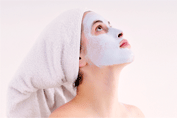Rosacea Treatment with Topical Ivermectin
Comparative Efficacy and Safety of Ivermectin Cream 1% and Metronidazole 0.75% in the treatment of papulopustular Rosacea Taieb A. et al AAD 2015 Annual Meeting, San Francisco CA – United States Methods 962 subjects enrolled evaluation of recurrence 36 weeks after study done over 16 weeks Evaluation of Rosacea severity in both treated groups (metronidazole […]
Friday, April 10th, 2015Diana, princess of Wales and Rosacea (Lady Diana)
Lady Diana (1961-1997) is one of the most famous British personalities and was the Princess of Wales when she got married to Prince Charles in 1981. Since that time, she was closely (too closely) followed by the media until her death in Paris 16 years later. She was often described as a shy person and […]
Monday, March 2nd, 2015Rosacea: what if you were simply treating a Sign of Demodicosis ?
Demodicosis is a disease in itself due to the presence of the mite Demodex folliculorum first classied as such in 1842 by the German dermatologist Carl Gustav Theodor Simon. It is easily confused with Rosacea (Acne Rosacea) because the latter, although considered to be associated with the presence of the mite, is controversial and an […]
Monday, July 28th, 2014Rosacea (Acne Rosacea): another topical treatment
Rosacea is a common dermatological condition affecting 0,5 – 1 % of the population which represents over 15 million individuals in the United States It is sometimes classified in stages 1 (erythema and telangiectasia), 2 and 3 (rhinophyma). It is an important cause of distress and social withdrawal. Around 60% of individuals with stage 1 […]
Sunday, March 23rd, 2014Rosacea (Acne Rosacea): protective effects of Canthelicidins and the importance of the Skin Barrier (treatment tips)
Rosacea is still a mystery with regards to etiology but it has been suggested that the Demodex mite might be associated with its presence and/or severity. Canthelicidines are antimicrobial peptides that protect the skin through: direct antimicrobial activity by initiating a hosp response resulting in cytokine release, inflammation, angiogenesis and reepitheliazation. In rosacea the […]
Sunday, March 23rd, 2014Does Rosacea become worse with time ?
Subtypes 1, 2 and 3 have different upregulated genes. However there is a 20-30% overlap in the similarity of the genes being upregulated. Rosacea can be divided into two distinct forms; In the typical form, rosacea can progress from subtypes 1, 2 and 3. But not necessarily as we know that there are genetic similarities, […]
Monday, March 3rd, 2014Rosacea (Deutsch)
Rosacea Eine häufig vorkommende Erkrankung, die die Gesichtshaut betrifft. Ursprünglich besitzt sie beides; eine vaskuläre und eine entzündliche Komponente. – Entzündliche: Papeln, Pusteln – Vaskuläre: Erythema, Teleangiektasie, Hitzewallung Verteilung Symmetrisch, im Gesicht befindend; kann auch asymmetrisch sein Nase, Wangen, Stirn, Kinn Kann auch eine Vielzahl von Augenverletzungen beinhalten. Ätiologie Unbekannt Alter – Bei Beginn dreißig […]
Tuesday, September 24th, 2013Rosacea (Rósroði) (Íslenska)
Rosacea (Rósroði) Algengur húðsjúkdómur á andlitshúð. Getur bæði komið út í æðum og með bólgum – Bólgur: Húðþykkildi, graftarbólur – Æðatengt: Hörundsroði, æðaslit, roði Staðsetning Samhverf svæði á andliti; geta einnig verið ósamhverf Nef, kinnar, enni, haka Getur einnig valdið ýmsum löskunum í augum Uppruni sjúkdóms Óþekkt Aldur – 30-35 ára þegar sjúkdómurinn brýst út […]
Thursday, July 26th, 2012Rosacea in individuals with skin of color
Rosacea in individuals with skin of color Rosacea is less common in patients with skin of color stage one disease is undereported as erythema and flushing masked by the pigmentation 4% of patients with rosacea are African Americans, Hispanics, Asian, Middle Eastern, Indian… On the other hand granulomatous rosacea is more common in patients of […]
Sunday, March 18th, 2012Rosacea (Italiano)
Rosacea Si tratta di una malattia cutanea comune della pelle del viso. Consiste in un’infiammazione e in disturbi vascolari. – Infiammazione: rilievi e pustole. – Disturbi vascolari: arrossamenti, vasi dilatati, vampate di calore. Distribuzione Simmetricamente distribuita sul viso; può anche essere asimmetrica. Naso, guance, fronte, mento. Può raggiungere l’occhio. Causa Sconosciuta. Età: il più delle […]
Wednesday, March 2nd, 2011



